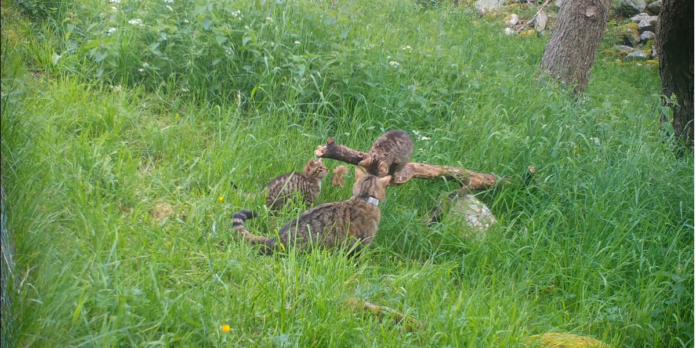The European wild cat (Felis silvestris silvestris) is physically similar to the domestic cat, but it is generally more imposing and, above all, extremely shy. He avoids getting close to people at all costs.
This is why it is difficult to study and monitor them in the wild. Some people have therefore been equipped with radio collars, which make it possible to track them.
Last year, 19 wild cats bred in captivity were released
Also called forest cat, this wild cat is in danger. It is threatened by both habitat destruction and hybridization with domestic cats. It is therefore in critical danger of extinction in certain countries.
This is particularly the case in Scotland, where the authorities are working to restore the wild population. As part of the Saving Wildcats project, 19 captive-bred cats were released into the Cairngorms National Park last year.
Adorable wild kittens have just been born this spring. This confirms that released adults manage not only to survive, but also to thrive.
We know that at least two of the released females were able to give birth this year. The kittens were filmed a few weeks after their birth.
Who are the fathers of these Scottish kittens?
As Dr. Keri Langridge, Field Manager for Saving Wildcats, explains: “We suspected that some females had given birth as their movements and activities changed very suddenly, but we weren’t sure until the images of the kittens were captured by our cameras .”
A single drawback could overshadow this excellent news. It concerns the paternity of the kittens, which has not yet been confirmed. The identity of the father(s) has not been established.
GPS data from the collars confirms that the mothers interacted with feral male cats. However, there is a risk that females may have mated with male cats.
DNA testing will soon confirm the paternity of feral kittens
“When the feral cats are old enough, we will try to DNA profile them. We hope these are the offspring of male feral cats released last year – and the first of many,” said Dr Helen Senn , who is responsible for the Saving Wildcats project.
In any case, these two births give hope for the recovery of the European wildcat population in Scotland. Big cats arrived in the country about 9,000 years ago from Central Europe.
They were then stuck in the United Kingdom after the disappearance of Doggerland, the landmass that connected Britain to the rest of Europe for several glacial cycles.
Domestic cats transmit diseases to their wild cousins
European wild cats have had to survive hunting and habitat loss. More recently, interbreeding with domestic cats and subsequent diseases have had a major impact on the species.
As of 2019, Felis silvestris silvestris is therefore considered to be on the verge of extinction in the wild in Scotland. The Saving Wildcats Project proves that “the process of breeding wild cats for release into the wild works.”
The released cats learned to hunt and survive. These births during their first breeding season in the wild are a clear indication that the cats are “doing well.”
Source: IFLScience
